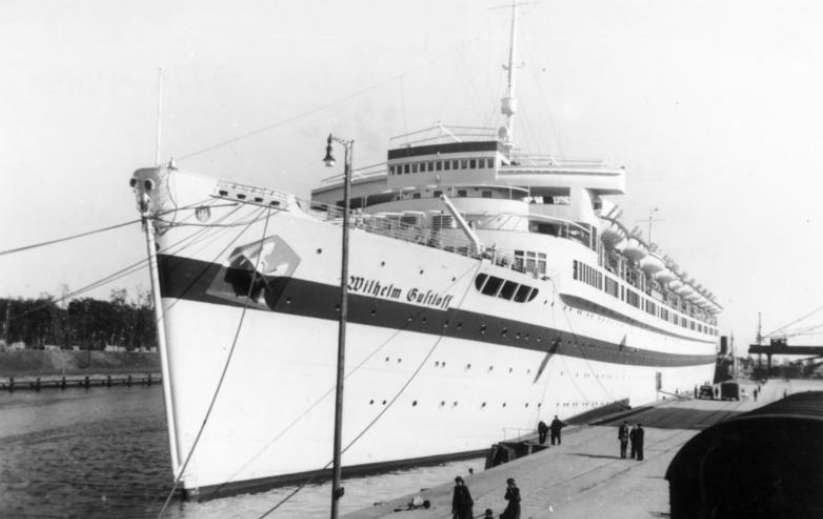The Lost Voices of the Wilhelm Gustloff
It was the winter of 1945; the Second World War was in its final months when the message to run became clear. But for some, it was already too late. Russia was closing in on Germany, but Hitler still prevented any evacuations to take place, for fear of showing that Germany was losing the war. Still, in January of that year, thousands of citizens from different nationalities tried to escape by ships over the Baltic Sea. One of these ships was the Wilhelm Gustloff.
The Germans staged an enormous naval evacuation called Operation Hannibal, in which soldiers commandeered vessels of all kinds, including fishing boats and dinghies, to get people to safety and out of the southeastern Baltic coast. Part of the operation was the Wilhelm Gustloff, which was initially built as a leisure ship, though during the war it had served first as a hospital, and then as barracks for naval personnel. The ship’s capacity was around 1,400 people, but the Germans removed all the furniture and even drained the swimming pool so that more could fit. When the ship set to sea on January 30th, 1945, it carried over 10,000 people, 5,000 being children.
Although the ship was German, there were also Lithuanians, Croatians, Estonians, and others aboard the ship. These people had visions of freedom and salvation, and to them, having a ticket in the Gustloff was their chance to escape.
Ruta Sepetys tells this forgotten story in her book Salt to the Sea, which is the winner of the Carnegie Medal and is a number-one bestseller internationally. Sepetys shares the story of a Lithuanian girl, a Polish girl, an East Prussian boy, and a German sailor, whose fates intertwine as they board the Wilhelm Gustloff.
The Lithuanian girl, Joana, enters the ship as a nurse.
The Polish girl, Emilia, enters the ship with no documentation and 9 months pregnant.
The East Prussian boy, Florian, enters the ship under false pretenses and with a deadly secret of the Amber Room (a chamber considered the eighth wonder of the world decorated with amber panels built in Prussia which eventually disappeared during the Second World War.)
The German sailor, Alfred, enters the ship and is no longer able to differentiate between what’s real and what’s not real.
They all believed in a better future, but waiting below the sea was a Soviet submarine. All it took was three torpedoes and 60 minutes for the ship to sink. 9,343 people were lost at sea, never to be seen again. The death toll surpasses those of the Titanic and the Lusitania combined, making it the largest and deadliest disaster at sea.
Salt to the Sea tells the story of thousands. Of those who had hope even though “war had bled color from everything, leaving nothing but a storm of gray.”
Sepetys says that amongst her interviews were divers who said that it was like swimming through “a forest of black bones” and that they even saw “a skeleton of a soldier still wearing boots and a military belt.” She adds that while researching, the reports of the survivors were “chilling”, one of them stating that “when I close my eyes, I can still see the children who had been thrown overboard in their life jackets, their heads under the water their little feet sticking in the air, and I hear their mothers’ screams.”
The Ghost Ship, the name that would later be given to the Wilhelm Gustloff, “was pregnant with lost souls conceived of war. They would crowd into her belly and she would give birth to their freedom.”
The fatalities of Operation Hannibal would not stop there. Merely weeks later, the Cap Arcona ship that was carrying over 4,500 concentration camp prisoners would sink, and Goya would add another toll of 7,000 people.
The story of the Wilhelm Gustloff is little known, and that’s why Ruta Sepetys’ “seeker of lost stories” narrates the lives of the thousands that were lost. Sepetys concludes that “those who are gone are not necessarily lost” and that “when the survivors are gone we must not let the truth disappear with them. Please, give them a voice.”
Through the survivors, we understand lost history, but it is only through those who perished that these stories are told in the first place. The 9,343 lives lost should not, and cannot be simply “salt to the sea.”
Sources:
https://www.smithsonianmag.com/history/deadliest-disaster-sea-happened-75-years-ago-yet-its-barely-known-why-180974077/

Sofia, now in her fourth and final year of The Talon, is thrilled to be back as Editor-in-Chief. Avid reader, she can often be found reading, checking...









